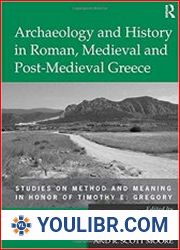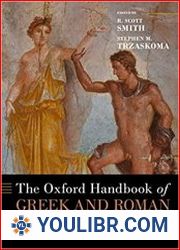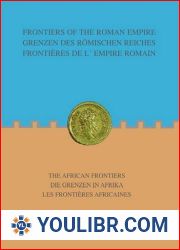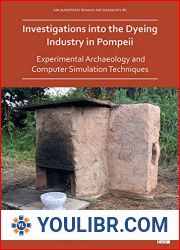
BOOKS - Late Roman Handmade Grog-Tempered Ware Producing Industries in South East Bri...

Late Roman Handmade Grog-Tempered Ware Producing Industries in South East Britain (Archaeopress Roman Archaeology)
Author: Malcolm Lyne
Year: January 31, 2016
Format: PDF
File size: PDF 2.4 MB
Language: English

Year: January 31, 2016
Format: PDF
File size: PDF 2.4 MB
Language: English

Late Roman Handmade Grog-Tempered Ware Producing Industries in South East Britain: An Archaeological Enigma The appearance and revival of handmade grog-tempered ware producing pottery industries during the late 3rd and 4th centuries in south and southeast Britain is an enigma that has puzzled archaeologists for decades. This primitive pottery was popular during a time when the production of Romanized wheel-turned grey and fine color-coated wares was still prevalent in the south of Britain, making its resurgence all the more intriguing. This publication is the result of 25 years of research into these grog-tempered wares, presenting corpora of forms associated with various industries and discussing their distributions at different periods. The possible reasons for their increasing popularity during the 4th century and disappearance during the 5th century AD are also explored. Introduction and Acknowledgements The Late Iron Age and Early Roman Background During the late 3rd and 4th centuries, the Isle of Wight and the Hampshire Basin in East Sussex and Kent experienced a revival in the popularity of handmade grog-tempered ware, a type of pottery that was more appropriate to the Late Iron Age.
Late Roman Handmade Grog-Tempered Ware Producing Industries in South East Britain: An Archaeological Enigma Появление и возрождение ручной посуды Grog-Tempered в конце III и IV веках на юге и юго-востоке Британии - это загадка, которая озадачивала археологов на протяжении десятилетий. Эта примитивная керамика была популярна в то время, когда производство романизированных изделий с серым колесом и тонким цветным покрытием все еще было распространено на юге Великобритании, что делало ее возрождение еще более интригующим. Эта публикация является результатом 25-летнего исследования этих изделий, темперированных грог, представляя корпуса форм, связанных с различными отраслями, и обсуждая их распространение в разные периоды. Также исследуются возможные причины их возрастающей популярности в течение IV века и исчезновения в течение V века нашей эры. Введение и благодарности Поздний железный век и ранняя римская предыстория В конце III и IV веках остров Уайт и бассейн Хэмпшир в Восточном Суссексе и Кенте пережили возрождение популярности изделий ручной работы из груг-темперированной посуды, типа керамики, который больше соответствовал позднему железному веку.
Late Roman Handmade Grog-Tempered Ware Industries Producting in South East Britain : An Archaeological Enigma L'apparition et la renaissance des ustensiles à main Grog-Tempered à la fin des IIIe et IVe siècles en Grande-Bretagne est un mystère, qui perplexe les archéologues depuis des décennies. Cette céramique primitive était populaire à une époque où la production de produits romanisés avec une roue grise et un revêtement de couleur fine était encore répandue dans le sud de la Grande-Bretagne, ce qui rendait sa renaissance encore plus intrigante. Cette publication est le résultat d'une étude de 25 ans sur ces produits, des grues tempérées, présentant des coquilles de formes liées à différentes industries et discutant de leur distribution à différentes périodes. s causes possibles de leur popularité croissante au cours du IVe siècle et de leur disparition au cours du V siècle de notre ère sont également étudiées. Introduction et remerciements L'âge du fer tardif et le début de l'histoire romaine À la fin des IIIe et IVe siècles, l'île de Wight et le bassin de Hampshire dans le Sussex de l'Est et le Kent ont connu une renaissance de la popularité des produits artisanaux à base de gruge, un type de céramique qui correspondait plus à l'âge du fer tardif.
Late Roman Handmade Grog-Tempered Ware Production Industries in South East Britain: An Archaeological Enigma La aparición y el renacimiento de los utensilios de mano Grog-Tempered al final siglos III y IV en el sur y sureste de Gran Bretaña son un misterio que ha desconcertado a los arqueólogos durante décadas. Esta cerámica primitiva era popular en una época en la que la producción de productos romanizados con rueda gris y revestimiento de colores finos todavía era común en el sur del Reino Unido, lo que hacía que su renacimiento fuera aún más intrigante. Esta publicación es el resultado de 25 de investigación sobre estos productos templados, presentando corpus de formas relacionadas con diferentes industrias y discutiendo su distribución en diferentes períodos. También se investigan las posibles causas de su creciente popularidad durante el siglo IV y la desaparición durante el siglo V d. C. Introducción y gratitud A finales de la Edad del Hierro y principios de la prehistoria romana A finales de los siglos III y IV, la isla de Wight y la cuenca del Hampshire en Sussex Oriental y Kent experimentaron un resurgimiento de la popularidad de los productos artesanales hechos con utensilios grug-temperados, un tipo de cerámica que correspondía más a la Edad del Hierro Tard.
Late Roman Handmade Grog-Tempered War Producing Industries in South East Britain: An Archaeological Enigma Surgimento e ressurgimento de utensílios de mão Grog-Tempered no final dos séculos III e IV no sul e sudeste da Grã-Bretanha é um mistério, que deixou os arqueólogos perplexos durante décadas. Esta cerâmica primitiva era popular quando a produção de artigos romanizados com roda cinza e revestimento colorido fino ainda era comum no sul do Reino Unido, tornando o seu renascimento ainda mais intrigante. Esta publicação é resultado de uma pesquisa de 25 anos sobre esses produtos, o grogue temperado, apresentando um corpo de formulários associados a vários setores e discutindo sua distribuição em diferentes períodos. Também estão a ser exploradas as possíveis causas de sua popularidade crescente durante o século IV e o desaparecimento durante o século V de Cristo. Introdução e gratidão da Idade do Ferro Tardio e da pré-história romana No final dos séculos III e IV, a ilha de White e a bacia de Hampshire, no ste do Sussex e Kent, viveram o renascimento da popularidade de produtos feitos à mão a partir de utensílios temperos, um tipo de cerâmica que correspondia mais à idade do ferro tardio.
Late Roman Handmade Grog-Templed Ware Producing Industries in South East Britain: An Archaeological Enigma L'arrivo e la rinascita dei piatti a mano Grog-Tempered alla fine del III e IV secolo nel sud e nel sud-est della Gran Bretagna sono un mistero che ha lasciato gli archeologi perplessi per decenni. Questa ceramica primitiva era popolare mentre la produzione di prodotti romanzati con ruota grigia e rivestimento colorato sottile era ancora diffuso nel sud del Regno Unito, rendendo la sua rinascita ancora più intrigante. Questa pubblicazione è il risultato di 25 anni di ricerca su questi prodotti, i grog temperati, presentando corpi di forme collegati a diversi settori e discutendone la distribuzione in diversi periodi. Vengono anche esplorate le possibili cause della loro crescente popolarità durante il IV secolo e la scomparsa durante il V secolo Cristo. Introduzione e gratitudine L'età del ferro tardivo e la prima storia romana Alla fine del III e IV secolo, l'isola di White e la piscina Hampshire nel Sussex orientale e il Kent hanno vissuto la rinascita della popolarità dei prodotti fatti a mano da piatti grassi temperati, come la ceramica, che corrispondeva più all'età del ferro tardo.
Late Roman Handmade Grog-Tempered Ware Producing Industries in South East Britain: An Archaeological Enigma Die Entstehung und Wiederbelebung von Grog-Tempered Handgeschirr im späten 3. und 4. Jahrhundert im Süden und Südosten Großbritanniens ist ein Rätsel, das Archäologen im Laufe der Zeit verwirrt hat Jahrzehnte. Diese primitive Keramik war zu einer Zeit beliebt, als die Herstellung von romanisierten Produkten mit grauem Rad und dünner Farbbeschichtung noch im Süden Großbritanniens üblich war, was ihre Wiederbelebung noch faszinierender machte. Diese Publikation ist das Ergebnis einer 25-jährigen Studie über diese Grog-temperierten Produkte, in der Formkörper vorgestellt werden, die mit verschiedenen Branchen verbunden sind, und deren Verteilung in verschiedenen Perioden diskutiert wird. Mögliche Gründe für ihre zunehmende Popularität im 4. Jahrhundert und ihr Verschwinden im 5. Jahrhundert nach Christus werden ebenfalls untersucht. Einführung und Danksagungen Späte Eisenzeit und frühe römische Vorgeschichte Im späten 3. und 4. Jahrhundert erlebten die Isle of Wight und das Hampshire Basin in East Sussex und Kent ein Wiederaufleben der Beliebtheit von Kunsthandwerk aus Gug-temperiertem Geschirr, einer Art Keramik, die eher der späten Eisenzeit entsprach.
Late Roman Handmade Grog-Tempered Ware Producing Industries w Południowo-Wschodniej Wielkiej Brytanii: Archeologiczna Enigma Pojawienie się i ożywienie Grog-hartowanego sprzętu pod koniec III i IV wieku w południowej i południowo-wschodniej Wielkiej Brytanii jest tajemnicą, która dziwi archeologów przez dziesięciolecia. Ta prymitywna ceramika była popularna w czasach, gdy produkcja wyrobów rumuńskich z szarym kołem i cienkim kolorowym pokryciem była nadal powszechna w południowej Wielkiej Brytanii, co czyni jej odrodzenie jeszcze bardziej intrygującym. Publikacja ta jest wynikiem 25-letniego badania tych produktów hartowanych grogami, prezentujących obudowy kształtów związanych z różnymi branżami i omawiających ich dystrybucję w różnych okresach. Możliwe powody ich rosnącej popularności w 4 wieku i zniknięcia w 5 wieku AD są również badane. Wprowadzenie i hołdy Późna epoka żelaza i wczesna prehistoria rzymska Pod koniec 3 i 4 wieku, Wyspa Wight i Hampshire Basin w East Sussex i Kent doświadczyły odrodzenia w popularności grug-hartowane rękodzieła, rodzaj ceramiki, która była bardziej zgodna z późną epoką żelaza.
''
Geç Roma Yapımı Grog-Temperli Eşya Güneydoğu Britanya'da Üretim Endüstrileri: Arkeolojik Bir Muamma Güney ve güneydoğu İngiltere'de 3. ve 4. yüzyılların sonlarında Grog-Temperli el eşyalarının ortaya çıkması ve yeniden canlanması, arkeologları onlarca yıl boyunca şaşırtan bir gizemdir. Bu ilkel çanak çömlek, gri bir tekerleğe ve ince renkli kaplamaya sahip Romanize eşyaların üretiminin güney İngiltere'de hala yaygın olduğu ve canlanmasını daha da ilgi çekici hale getirdiği bir zamanda popülerdi. Bu yayın, bu grog-temperli ürünlerin 25 yıllık bir çalışmasının sonucudur, farklı endüstrilerle ilişkili şekillerin kılıflarını sunar ve farklı dönemlerde dağılımlarını tartışır. 4. yüzyılda artan popülaritelerinin ve MS 5. yüzyılda ortadan kaybolmalarının olası nedenleri de araştırılmaktadır. Giriş ve haraç Geç Demir Çağı ve erken Roma tarih öncesi Geç 3. ve 4. yüzyıllarda, Doğu Sussex ve Kent'teki Wight Adası ve Hampshire Havzası, geç Demir Çağı ile daha uyumlu olan bir tür çanak çömlek olan grug temperli el sanatlarının popülaritesinde yeniden canlanma yaşadı.
صناعات إنتاج الأدوات الرومانية المصنوعة يدويًا في أواخر القرن الثالث والرابع في جنوب وجنوب شرق بريطانيا: لغز أثري إن ظهور وإحياء الأدوات اليدوية Grog-Tempered في أواخر القرنين الثالث والرابع في جنوب وجنوب شرق بريطانيا هو لغز حيّر علماء الآثار في جميع أنحاء البلاد عقود. كان هذا الفخار البدائي شائعًا في وقت كان فيه إنتاج السلع الرومانية بعجلة رمادية وغطاء رقيق اللون لا يزال شائعًا في جنوب بريطانيا، مما جعل إحياءه أكثر إثارة للاهتمام. هذا المنشور هو نتيجة لدراسة استمرت 25 عامًا لهذه المنتجات ذات المزاج المتقلب، وعرض أغلفة الأشكال المرتبطة بالصناعات المختلفة ومناقشة توزيعها في فترات مختلفة. كما يتم التحقيق في الأسباب المحتملة لزيادة شعبيتها خلال القرن الرابع والاختفاء خلال القرن الخامس الميلادي. مقدمة وتكريم العصر الحديدي المتأخر وأوائل عصور ما قبل التاريخ الروماني في أواخر القرنين الثالث والرابع، شهدت جزيرة وايت وحوض هامبشاير في شرق ساسكس وكينت عودة ظهور شعبية الحرف اليدوية ذات المزاج الغريب، وهو نوع من الفخار يتماشى بشكل أكبر مع الحديد المتأخر العمر.
晚期羅馬手工藝品在英國東南部生產設備:考古學的Enigma在3世紀末和4世紀末在英國南部和東南部出現和復興手工藝品Grog-Tempered是一個謎團幾十來一直困擾著考古學家。這種原始陶器在當時很流行,當時在英國南部仍然普遍生產帶有灰色輪子和細色塗層的羅馬化產品,這使得其復興更加有趣。該出版物是對這些產品進行了長達25的研究的結果,這些產品是脾氣暴躁的,代表了與不同行業相關的模具盒,並討論了它們在不同時期的分布。還研究了它們在4世紀日益普及和公元5世紀滅絕的可能原因。介紹和感謝鐵器時代晚期和羅馬早期的背景故事在3世紀末和4世紀末期,懷特島和漢普郡盆地在東薩塞克斯郡和肯特郡幸免於難。







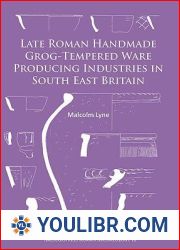
 49
49  3 TON
3 TON
























